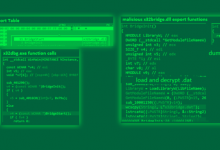Preventing Data Leaks: Best Practices and Strategies
In today’s digital world, data leaks have become a major concern for businesses and individuals alike. With the increasing amount of sensitive information stored online, it is crucial to have effective strategies and best practices in place to prevent the leakage of data. Not only can data leaks lead to financial losses and damage to a company’s reputation, but they can also result in severe consequences for individuals whose personal information is exposed. Therefore, it is essential to take proactive steps to prevent data leaks and safeguard sensitive information.
One of the first steps in preventing data leaks is to have a robust data governance framework. This involves establishing clear policies and procedures that dictate how data is collected, stored, and accessed within an organization. These policies should address issues such as data classification, access controls, and encryption. Regular training and awareness programs for employees must also be conducted to ensure that everyone is aware of the importance of data protection and understands their responsibilities.
Implementing strong access controls is another crucial step. This involves limiting access to sensitive data only to authorized personnel who need it to perform their job duties. Role-based access controls should be enforced, ensuring that employees have access to only the data that is necessary for their specific roles. Additionally, the use of strong and unique passwords, multi-factor authentication, and regular account reviews can further enhance access control measures.
Encryption is an effective technique to protect data, both at rest and in transit. By encrypting data, it becomes unreadable and can only be decrypted with the appropriate encryption key. Data encryption should be employed for all sensitive information, such as customer data, financial records, and intellectual property. Additionally, securing data in transit by using protocols such as SSL/TLS when transmitting data over networks is crucial to prevent eavesdropping and interception.
Regular data backups and secure storage solutions are also essential to prevent data leaks. Data backups should be performed regularly to ensure that in the event of a data breach or accidental data loss, a recent and clean copy of the data can be restored. These backups should be stored securely, either offline or in encrypted cloud storage, to prevent unauthorized access.
Implementing a comprehensive data loss prevention (DLP) system can help detect and mitigate data leaks. A DLP system uses various techniques, including content analysis, user behavior analysis, and network monitoring, to identify potential data leaks and prevent sensitive information from leaving the organization’s network. DLP systems can be customized to meet an organization’s specific needs and can provide real-time alerts and block data transfers that violate security policies.
Regular security audits and vulnerability assessments are crucial to identify potential vulnerabilities within an organization’s systems and network. By conducting regular audits, businesses can uncover any weaknesses in their security infrastructure and take the necessary steps to rectify them before they can be exploited by malicious actors. Vulnerability assessments can also help identify security gaps in third-party software and vendors that might pose a risk to data security.
Lastly, establishing a strong incident response plan is essential to minimize the impact of a data breach in case prevention measures fail. An incident response plan should outline clear steps to be taken in the event of a data breach, including who is responsible for what actions, who needs to be notified, and how to communicate with affected parties. Regular drills and simulations of data breach scenarios can ensure that the incident response plan is effective and well-executed when the need arises.
In conclusion, preventing data leaks is an ongoing task that requires a combination of best practices, robust policies, and technological measures. From establishing a strong data governance framework to implementing access controls, encryption, and data loss prevention systems, organizations must be proactive in safeguarding sensitive information. By following these best practices and investing in data security measures, businesses and individuals can significantly reduce the risk of data leaks and protect their valuable data from falling into the wrong hands.






I do not even know how I ended up here, but I thought this post was good. I do not know who you are but certainly you are going to a famous blogger if you are not already 😉 Cheers!